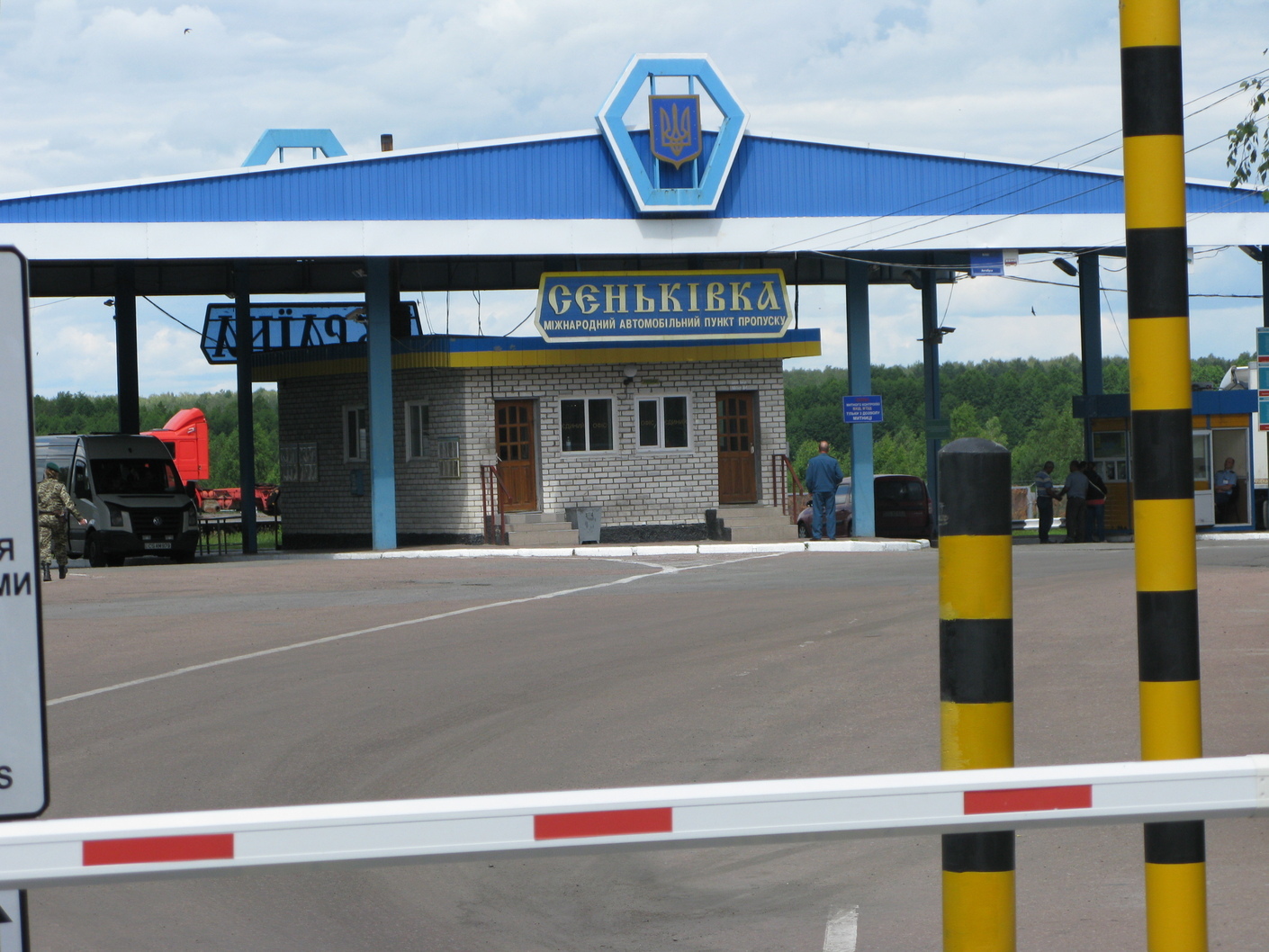Between two enemies. Interview with Horodnia community leader
Andrii Bohdan, Head of the Horodnia community in the Chernihiv Region
By Dmytro Syniak
Three ‘sisters’
The Old Ruthenian word ‘horodnia’ means ‘a hedged place’ or ‘a fence’. The city of Horodnia, the centre of the Horodnia community in the Chernihiv region, has demonstrated the accuracy of its name throughout its long history. At the beginning of the 13th century, it defended itself against the Mongols; in the mid-17th century, it did the same against the Muscovites, as the border between the Hetmanate and the Muscovite Tsardom passed nearby. At that time, Horodnia was a sotnia town in the Chernihiv regiment, responsible for governing 55 nearby towns and villages. The Horodnia community, formed at the end of 2017, incorporated almost as many: one city and 60 villages. The community’s defining feature is that the borders of three countries – Ukraine, Belarus and Russia – meet within its territory. While this used to be an advantage, it has now become a disadvantage, as the Horodnia community is the only one in Ukraine to border two enemy states.
Until 2014, the towns and villages in this area prospered thanks to their favourable location on the fastest route between Kyiv and Moscow. The centre of the region’s cultural life was the International Festival of Slavic Peoples ‘Slavic Unity’, which had been held here every summer since 1975. At that time, a monument bearing the symbolic name ‘Three Sisters’ was erected at the border crossing and a large square was built specifically for the festival. ‘Slavic Unity’ played a key role in the decision of the Cabinet of Ministers of Ukraine to fully renovate the Ukrainian section of the Kyiv–Moscow motorway in the early 2000s. In the summer of 2004, President Leonid Kuchma was due to travel along this road to ‘Three Sisters’ for a meeting with Alexander Lukashenko and Vladimir Putin. Although Kuchma himself arrived by helicopter, the road remained and is now the region’s main transport artery.
In November 2012, Grigory Karasin, Russia’s Deputy Minister of Foreign Affairs, solemnly opened the first Russian border post on the Russian-Ukrainian border in the presence of his Ukrainian counterpart, Ruslan Demchenko, First Deputy Minister of Foreign Affairs of Ukraine. While Ukraine and Belarus had long since marked their border, Russia had been delaying this process. Therefore, the Ukrainian Government welcomed this step, sincerely hoping that, after post No. 1, the rest would finally follow. However, border post No. 1 at the ‘Three Sisters’ remained the only Russian border marker along the entire 1,974-kilometre Ukrainian-Russian border. This ‘gesture of friendship’ was actually a cynical information operation intended to divert attention from Russia’s preparations for the impending war.
Ukrainians have not participated in the ‘Slavic Unity’ festival since 2014, and it was last held in 2016. Many residents of the Horodnia community now remember the festival with disgust. Among them is Andrii Bohdan, Head of the Horodnia community, who has won six mayoral elections since 2002 and has been the city’s unchallenged leader for 23 years. His colleagues in Russia and Belarus, with whom he had previously enjoyed good relations, turned a blind eye back in 2014. After 24 February 2022, they never called him once. Even if they had called, however, Mr Bohdan would not have spoken to them. ‘What is there to talk about with people who have neither real power nor the right to speak the truth aloud?’ he asks.
The war has had a radical impact on his community, despite it not having suffered major destruction. When Andrii Bohdan first became head of the city council in 2002, Horodnia was a promising transport hub on a strategically important route. In 2013, around 800 lorries passed through the local border crossing point of Senkivka every day. However, the following year, when Russia annexed Crimea and sent troops into Donbas, this figure dropped to 200. Not only is the border closed, it is also heavily mined. Several border villages in the community, including Senkivka, have been destroyed and are now deserted. In such difficult conditions, the Horodnia City Council must provide the population with all the necessary services and plan for the future, which is clearly not going to be easy. This future was indeed the main topic of our conversation with Andrii Bohdan.
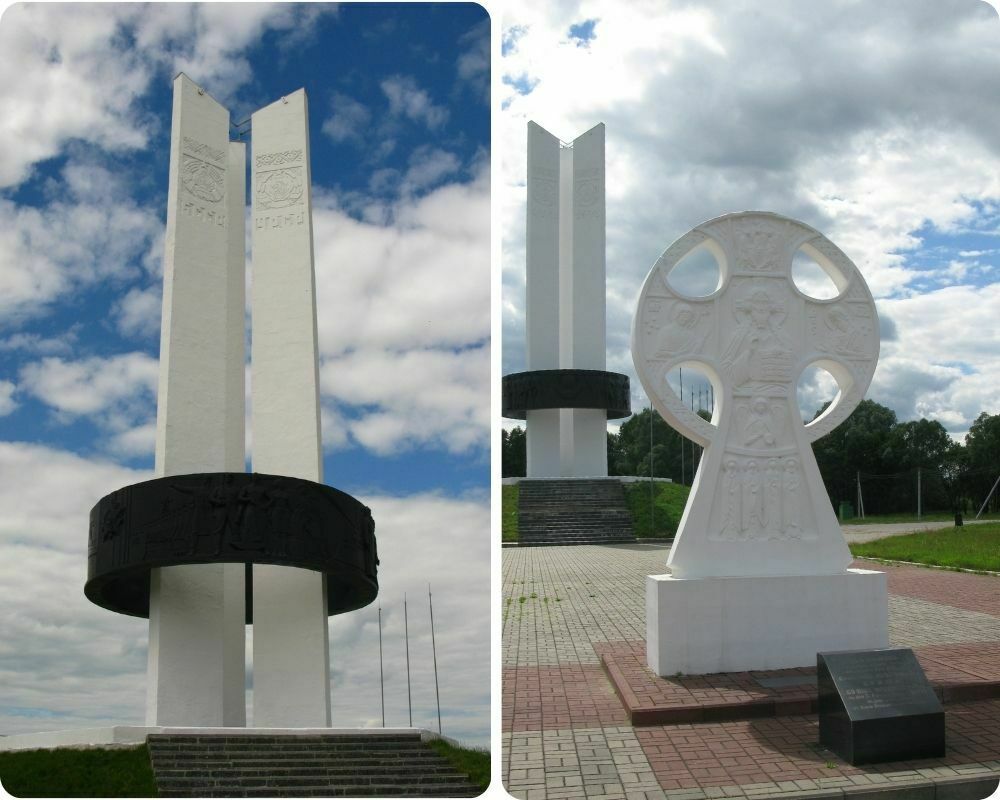
The ‘Three Sisters’ monument at the crossroads of the Ukrainian, Russian and Belarusian borders. On 12 May 2022, the Advisory Council on Cultural Heritage Protection under the Department of Culture and Tourism, Nationalities and Religions of the Chernihiv Regional Military Administration unanimously voted to remove this monument from the list of historical monuments of local significance. On 31 May 2023, the Russians blew up the road from their side of the monument to prevent a possible attack by the Armed Forces of Ukraine. Photo by Dmytro Syniak
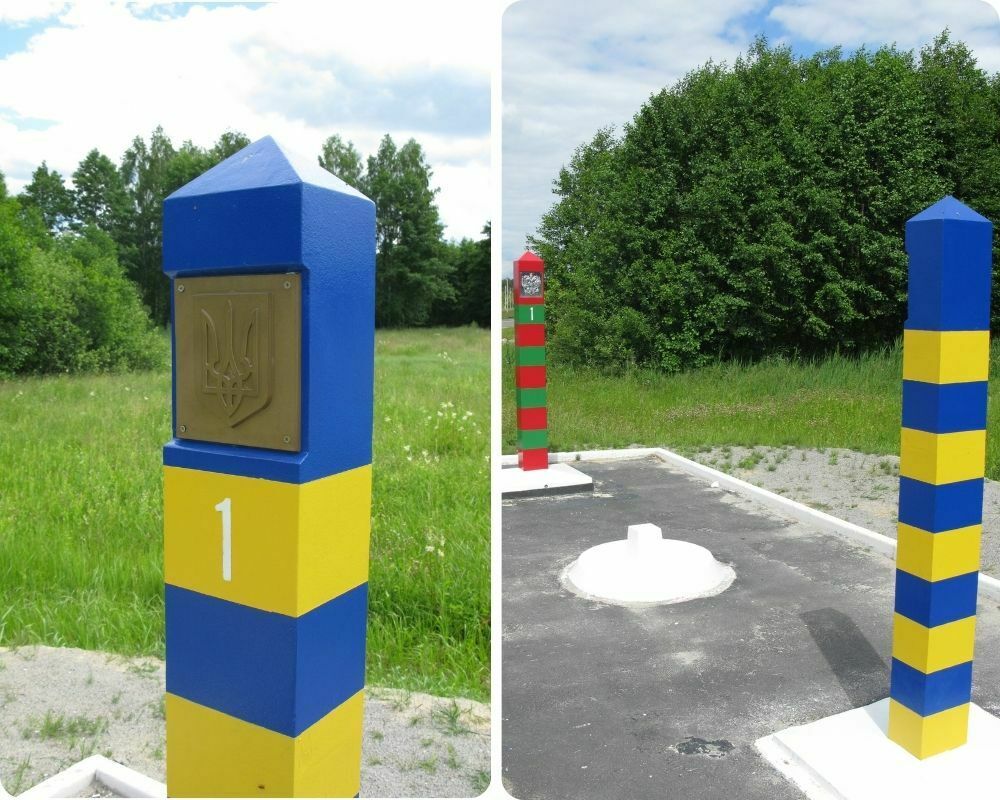
Ukrainian border post No. 1 near ‘Three Sisters’, opposite which is Russian border post No. 1. It remains the only border post on the entire Ukrainian-Russian border. Photo by Dmytro Syniak
Senkivka border crossing point. Photo by Dmytro Syniak, 2015
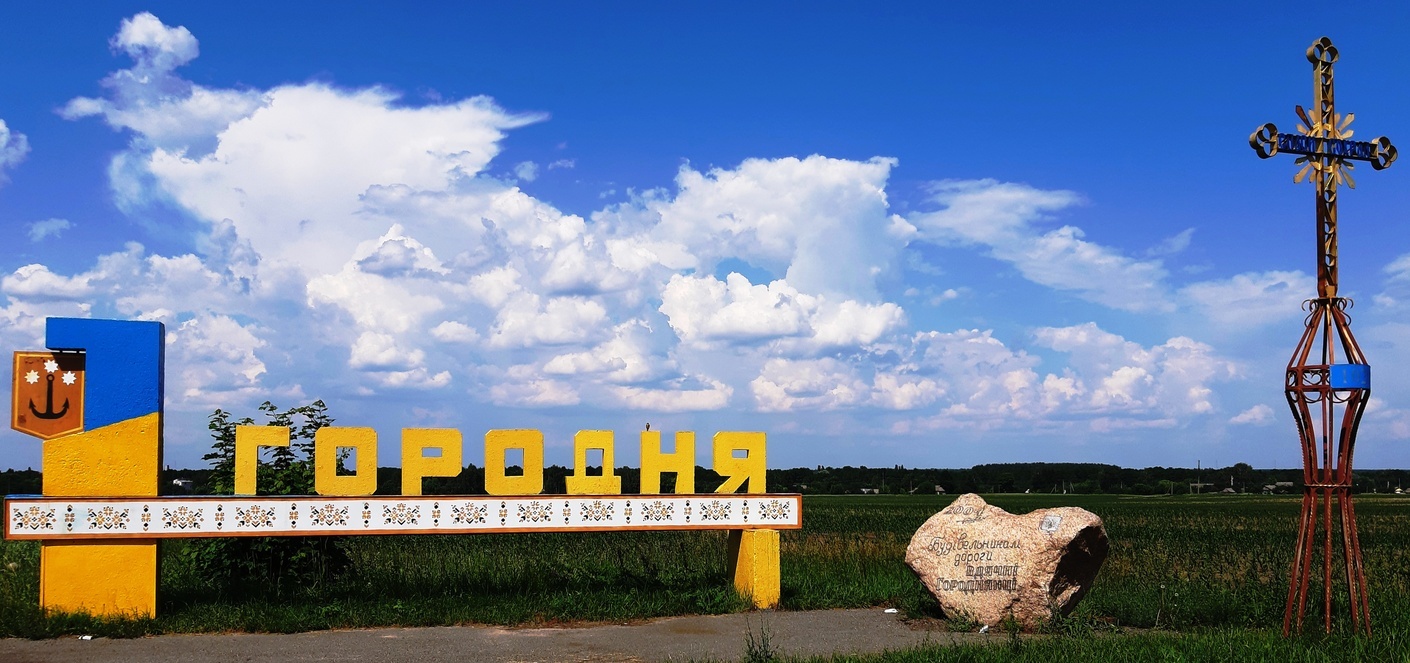 Horodnia welcome sign
Horodnia welcome sign
Occupation lasting 37 days
How has your community been affected by the Russian occupation?
With a 49 km border with Belarus and a 2 km border with Russia, there was no way we could have defended ourselves on 24 February 2022. We were attacked from literally all sides. Nevertheless, our border guards and other military units managed to hold back the Russian invasion for several hours before withdrawing and blowing up the bridges across our two largest rivers, the Smiachka and the Snov (tributaries of the Desna). As a result of the explosion, we were cut off from the outside world. This situation lasted for 40 days. We were unable to provide our people with basic necessities such as food, medicine or cash, nor could we deliver humanitarian aid. Nevertheless, we persevered. We organised the processing of agricultural products ourselves and distributed them to the people. We also exchanged some of the cash available in our bank branches for electronic transfers from the people’s credit cards. We set up a humanitarian headquarters and did everything we could to unite the efforts of entrepreneurs and community activists. And we managed to survive!
Did the Russians interfere with this process? Did they loot your banks, shops, and post offices?
One could say that we were fortunate because there were no regular troops in our community, only Russian special services and the police. These people have a different status to ordinary soldiers and did not engage in looting. They were only interested in establishing a Russian regime in the area. Since we were cut off from the outside world, they adopted a wait-and-see strategy. In other words, the occupiers were convinced that they had plenty of time, so they decided to wait until we ran out of food and medicine. Then, in exchange for their assistance, they would demand something from us. We understood this, so we tried to maintain our autonomy for as long as possible – the invaders on their own and us on ours. We refused to let them take down our flag, which flew over the city council throughout the entire occupation. This did not bother the Russians much because they were confident in their strength and knew that, in exchange for any help they provided, the first condition would be replacing our flag with a Russian rag. Fortunately, no one needed their help.
Were any of your residents killed or injured during the occupation?
Unfortunately, one man did die. I think he was just unlucky to be in the wrong place at the wrong time. In the early days of the invasion, our troops destroyed a Russian military convoy on the outskirts of Horodnia. Later, near the burnt-out Russian vehicles, we found one of our residents with a fatal bullet wound to the back. No one knows what he was doing there, who killed him or why… You know, I just remembered… There was looting. The village of Ilmivka, which is located on the border with Belarus, suffered the most as some Russian units were based there and looted all the local shops. In Horodnia itself, they also looted a shop on their retreat. They stopped for half an hour specifically for this purpose.
During the Russian occupation of the Chernihiv region for more than a month, 478 civilians were killed. A further 692 people were wounded. The majority of casualties in the Chernihiv region were the result of Russian artillery shelling and air strikes. Additionally, Russian forces shot at civilian vehicles and killed dozens of pro-Ukrainian activists.
How did the Horodnia community welcome the Ukrainian troops?
That day will never be forgotten! Ukrainian army units entered our city on 2 April, ending 37 days of occupation. Everyone felt elated. We realised that Ukraine could and should defeat the ‘second army in the world’. Needless to say, we helped our military wherever we could. In particular, we repaired the pontoon bridge that the Russians had built and then set on fire. Our utility workers skilfully used the burnt pontoons to do this. Ukrainian military vehicles then crossed the bridge northwards, while our trucks crossed southwards, later bringing us food and essential goods.
A demonstration in Horodnia on 9 March 2022 to honour Taras Shevchenko’s birthday. Undeterred by the occupiers, local residents came out onto the streets waving yellow and blue flags
‘If families with many children want to move here, we will do everything we can to find them housing.’
What has life been like for your community since it was liberated?
We have lost several thousand residents, who have either fled to safer regions or left the country. I consider this to be our greatest loss. However, for a community bordering two enemy states, losing only around 10 per cent of its population is a victory. More than half of our residents – around 12,000 people – live in Horodnia, a city with good infrastructure and everything they need. Another 9,000 people live in villages and on small farms scattered across an area of 1,200 square kilometres. Although we formally have 60 localities, many of them are small farms. Leaving them often means giving up everything you and your ancestors have built and accumulated over many years. The issue is not even looters. Our forests grow so quickly that if you return to your abandoned house after ten years, it may simply be hidden by the new forest that has grown in its place…
What can you say about the Russian shelling? How much does it affect the community?
On 14 April 2022, the Russians fired a large Soviet Tochka-U missile at the outskirts of Horodnia. Fortunately, the missile sank deep into the sandy soil and did not cause much damage. It left only a giant crater, measuring 6 metres in depth and 10 metres in width. After that, the systematic destruction of the border villages began. Initially, we supported the local residents and delivered humanitarian aid, but eventually we were forced to evacuate everyone. At that time, around 120 people lived in Senkivka alone. There were around 50 households, all of which have now been destroyed. Hasychivka used to have about 30 residents, but now there is no one left. Moshchenka had 400 residents, and now only about 190 remain. Polissia had 160–170 residents, and now only about 70 remain. Around 40 people lived in Berylivka, but now only 10 remain. These border villages are frequently targeted by Russian artillery and drone strikes. It is always dangerous there now.
On 14 April 2022, Russians struck the outskirts of Horodnia with a Tochka-U missile
Where have the residents of Senkivka and other border villages been evacuated to?
Some people left for Chernihiv, where a modular town had been built for people like them. However, we tried not to let our residents leave. Over the past decade, the birth rate has fallen, leaving our community with a surplus of housing. Therefore, our city council adopted a special programme through which it began buying up empty houses to transfer to displaced persons from the border area. Over the past four years, we have spent UAH 1.4 million on this programme, purchasing over 20 properties. We never refuse any residents of the border area who ask to be resettled. We find a house for them, repair it, agree on the details, and then they can move in. By the way, we are very selective about the properties we buy. We choose higher-quality housing located in villages with better transport links and amenities such as gas and running water. We are very grateful to the various foundations that often contribute to the repair of such housing. These include the Ukrainian Red Cross Society, Rokada, Zoa, the Norwegian Refugee Council and Right to Protection, among others. They repair roofs, install windows and purchase household appliances. The city council signs an agreement with new residents whereby, if they stay in the house for ten years, they can privatise it. This ensures that our community does not lose its population and helps people to cope with the loss of their family homes. After all, they remain at home – in their community.
Do you also purchase properties for displaced persons from occupied and frontline territories? How many displaced people are there in your community?
There are around 400 people. It may seem illogical that people would come to us when we are on the border with two enemy states. However, these are our former residents who left for the east or south in the past and have now returned to their homeland. Despite family ties, I see this return as a sign of trust in the local authorities and military. Besides... I do know somewhat about Ukraine… There are communities where water has to be brought in, the land is infertile and firewood is very expensive in winter. We have a wonderful climate, forests, lakes and clean air. Anyone who visits cannot help but fall in love with our land... We currently have a serious demographic problem. Before the invasion, we had an average of 150 births per year; now, it is 80–90. Without children, there will be no future – we understand that perfectly well. Therefore, if families with lots of children want to move here, we will do everything we can to find them housing. As for the shelling… There is nowhere to hide from it now. On 1 September, Russian drones flew almost to the centre of Horodnia (just 30 km from the border!) and dropped two shells. Tragically, two people were injured and nearby houses were damaged.

During the demonstration held under occupation on 9 March 2022 to mark Taras Shevchenko’s birthday
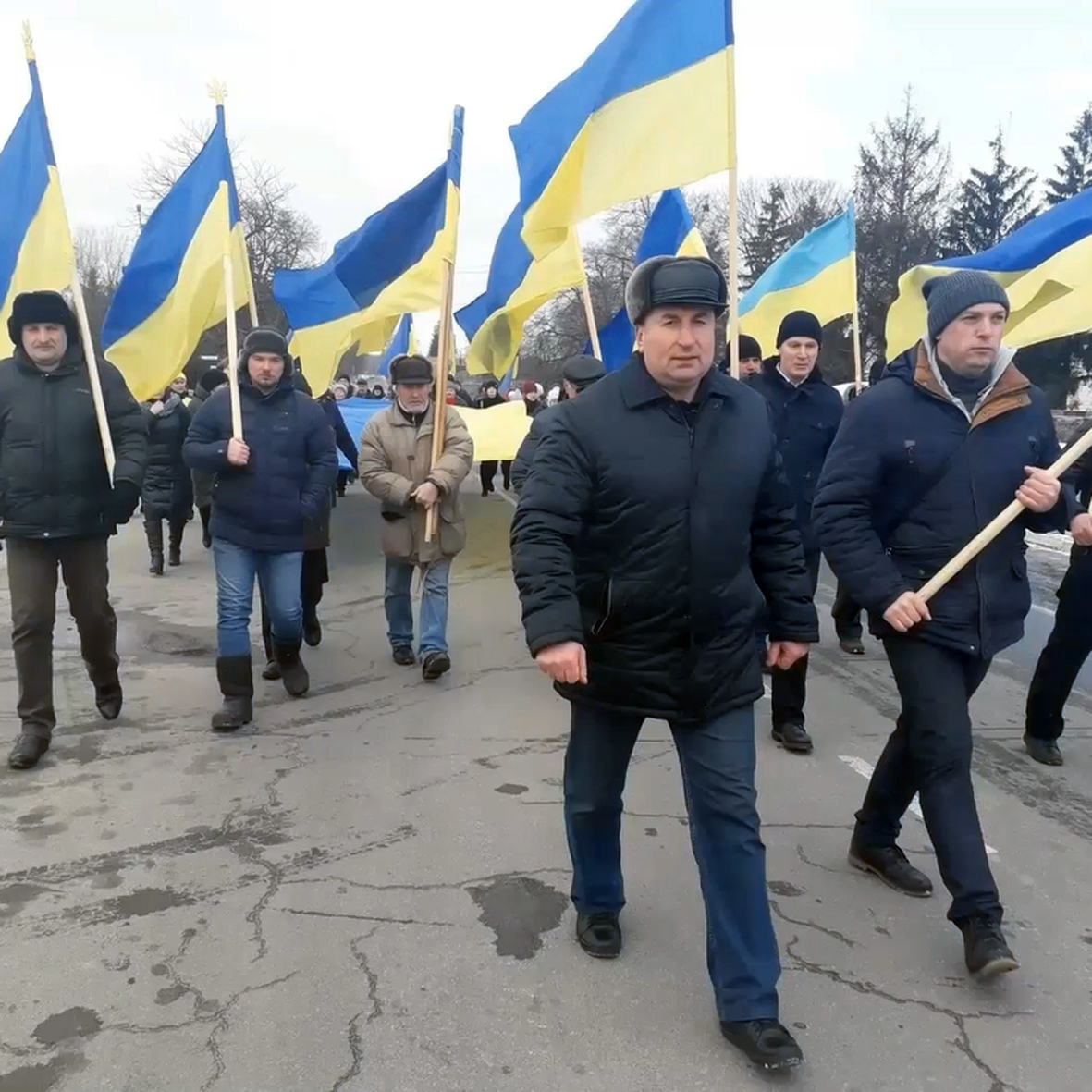
Andrii Bohdan, Mayor of Horodnia, during the demonstration on 9 March 2022, which was closely monitored by the occupiers. To the right of the community leader is Volodymyr Pinchuk, his first deputy
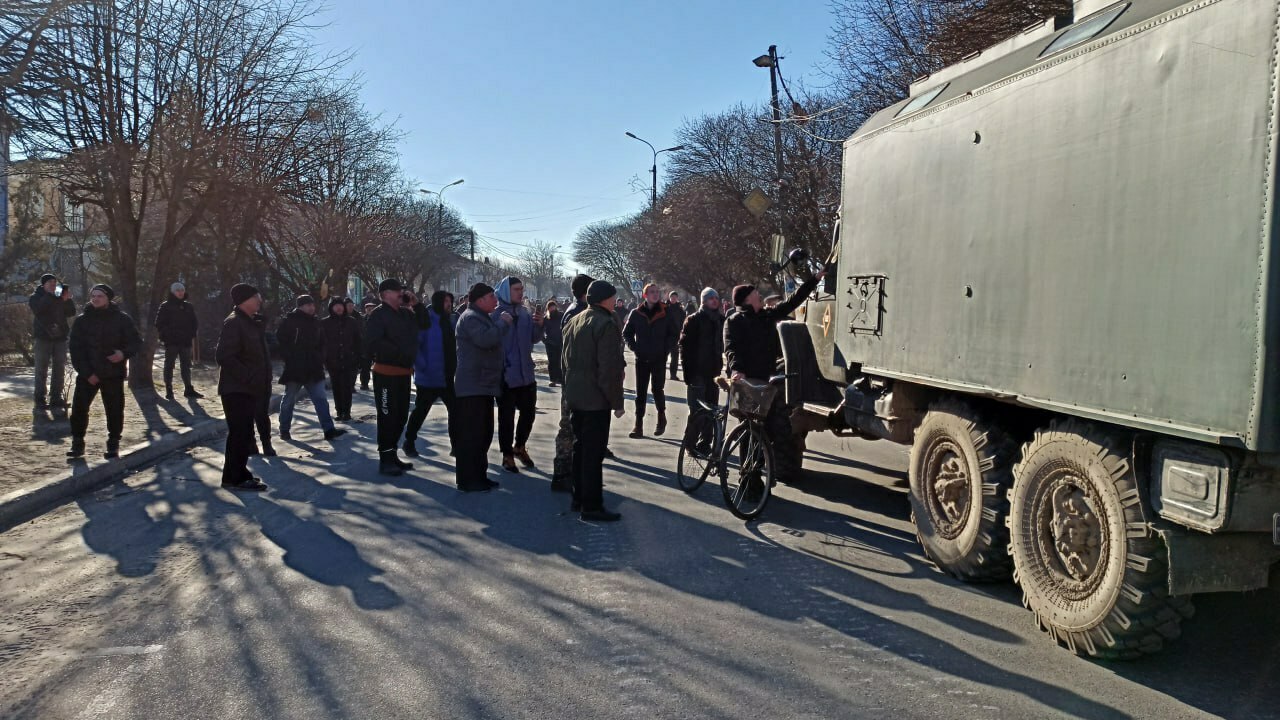
During the occupation, Ukrainians stopped enemy vehicles with their bare hands
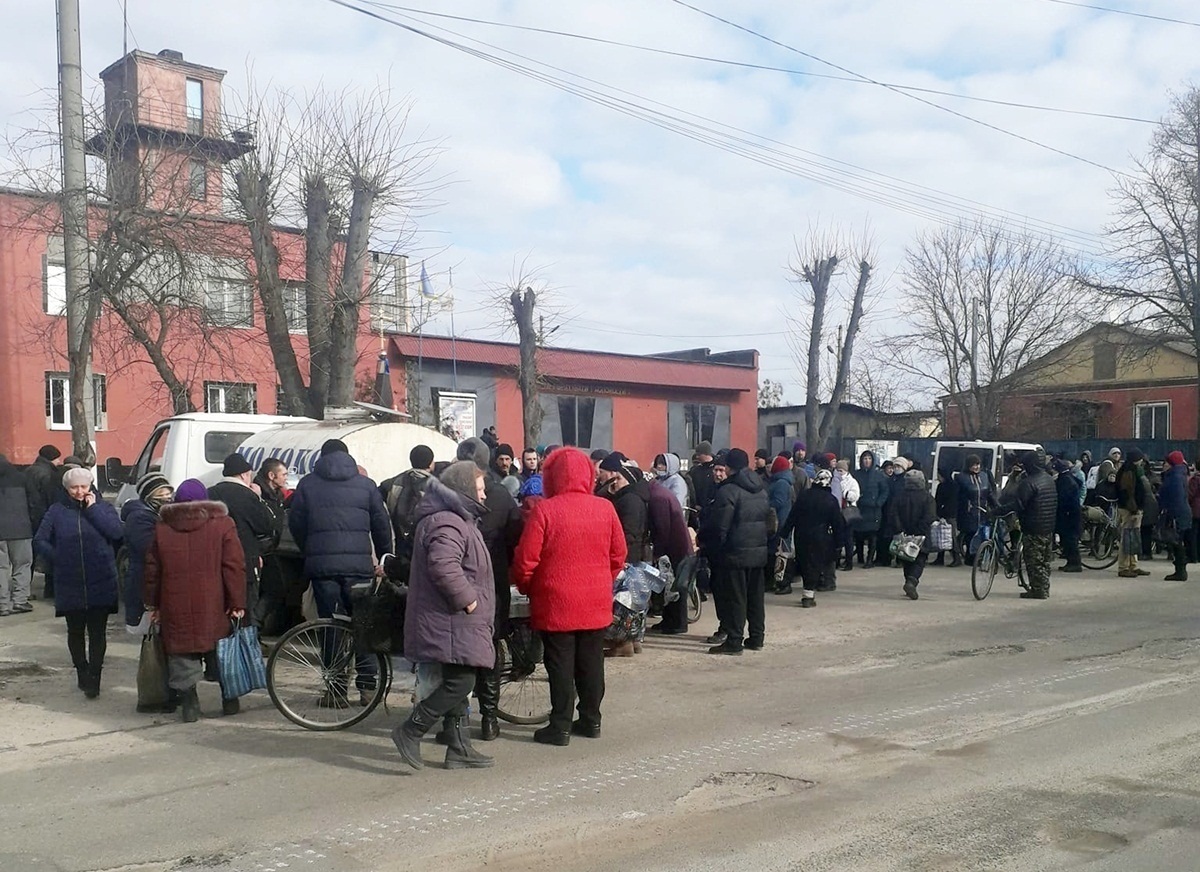
Queue for milk in Horodnia during the occupation
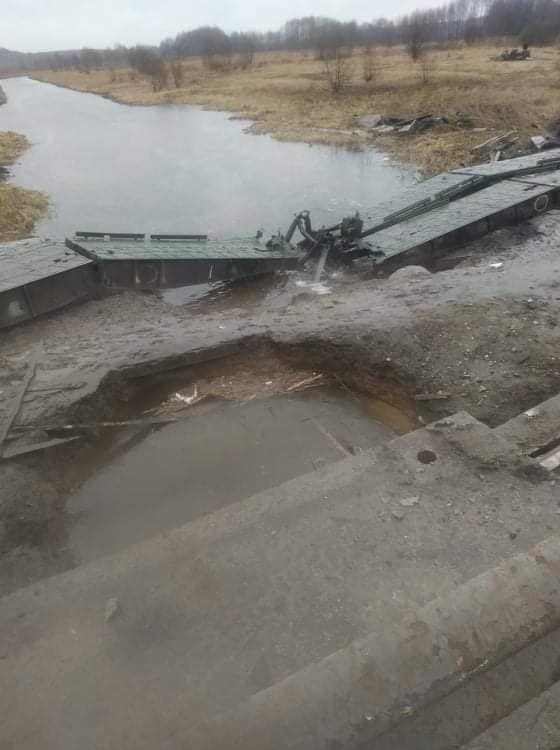
Destroyed bridge over the Smiachka River
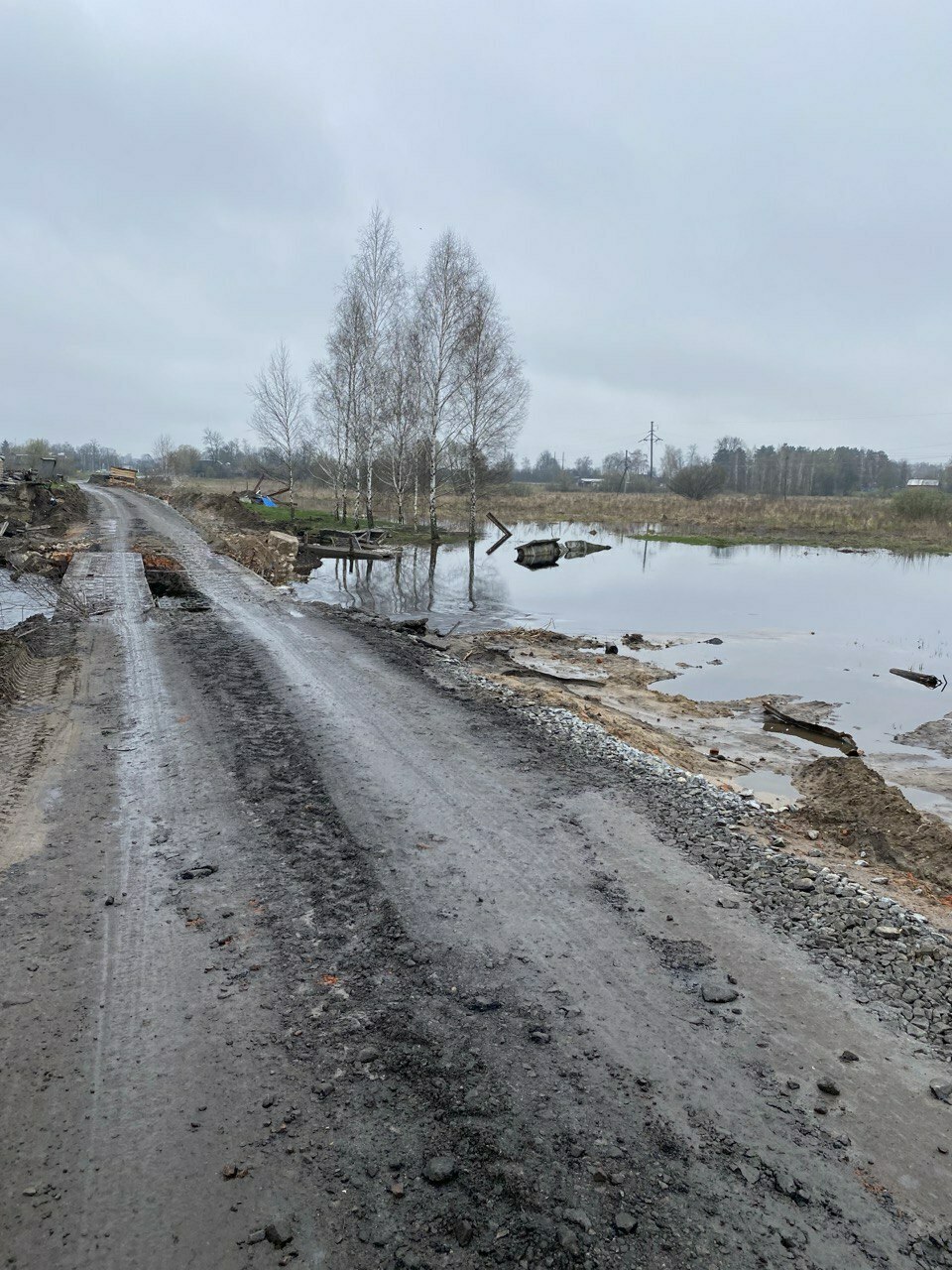
Bridge across the Smiachka River reconstructed with the help of local utility workers after the liberation of Horodnia in April 2022
Regarding non-standard assistance to the army and commercially viable utility companies
Does the Horodnia community help the army and border guards?
Of course! We helped them even before the war because they had been stationed on our territory for a long time. Now, they have become even stronger. The military and border guards have consistently received funding, necessary materials and vehicles from us. We try not to turn them down, no matter how difficult it is for us to fulfil their requests. Even now, during these very challenging times when we have had to optimise our spending, the border guards still receive UAH 2 million from us per session. There have already been three sessions this year, so they have received UAH 6 million in total. And the money is just one aspect of it… And the money is just one aspect of it. We have also organised several groups to weave camouflage nets, make trench candles and sew items such as knee pads, plate carriers and balaclavas. We employ people who are unemployed and are referred to us by the labour office. Various funds and volunteers purchase the materials, and we pay the workers a small salary, which we see more as social assistance. Everyone involved feels good about it: the local residents, ourselves, and the military. I am deliberately not providing any figures so as not to give the enemy unnecessary information, but I will say that our community ranks first in the region in terms of the number of people involved in this area. I am frankly proud of that.
You said that the community has optimised its spending. What exactly do you mean by that?
I must say that cost optimisation has always been the main principle of our community – its foundation stone, if you will. Have you ever heard of a profitable utility company? Ours are just that – and not because of high tariffs. In fact, our tariffs are among the lowest in the region. If there are losses, we simply change the management. I have always told all managers that we do not have the funds to subsidise the utility sector. However, before that, we spent many years teaching people to pay for utilities, explaining it to them countless times and fighting for every household. Sometimes we even had to put pressure on those who refused to pay. In the end, we achieved our goal: almost everyone pays for water, electricity, garbage collection, sewage, and other utilities. So, we just had to set things up correctly.
What needs to be done to set up the work correctly? Share your secret.
One may employ unnecessary personnel, conduct endless repairs, and send vehicles back and forth as necessary and unnecessarily. Alternatively, one could use advanced materials and technologies and hire highly qualified specialists on reasonable salaries, rather than employing individuals with substance abuse issues on minimal wages. These specialists will be able to do what drunkards will never do. One can complain forever that there is no money for new transport or maintaining existing transport, or you can develop a system for leasing existing transport and generate a new source of income. After all, public transport is not in use 24/7. However, for such a rental system to be effective, theft and corruption must also be prevented. Even if the system works perfectly, there may be no money in the treasury. We have made everything as transparent and efficient as possible. However, achieving this result took years of daily work.
Waste collection fees are usually most problematic in rural communities. What proportion of rural residents in your community pay for waste collection?
About 90 per cent. As soon as I was elected mayor in 2002, we began working on waste collection in the city’s private sector. After the community was amalgamated in 2017, we also involved the villages in this work. We told them that there was a company that could collect the waste and that they should come to an agreement with this company and their neighbours. Choose two or three trustworthy villagers to handle the finances, decide how often waste should be collected and calculate how much each person should pay. If you prefer, you can choose another company, but your waste must be collected!
I find it hard to believe that people accepted your proposals so readily.
It did not happen immediately. Believe me, it took years of hard work every day. However, the city council’s role remained unchanged: to require people to resolve the waste disposal issue. If they refused, the city council reserved the right to reject their requests. At the same time, I was always confident because I knew I had the right to demand basic tidiness from people. We just had to break the harmful mindset that paying for utilities is optional. The decisions of the city council, a collegial elected body, are binding – this is something that everyone must remember. Without this, the community cannot be successful. Of course, there were all kinds of cases, and even high-profile scandals, but the matter never went to court. This is because people understood that the city council’s demands were fair and reasonable. Ultimately, even those who had been deliberately avoiding payment signed contracts and started paying. However, the city council had to monitor the utility companies, who were expected to provide an uninterrupted service. For example, if we said that a rubbish truck would be on a certain street on the second and fourth Thursday of every month, it had to be there, no matter what. Otherwise, people would stop paying again.
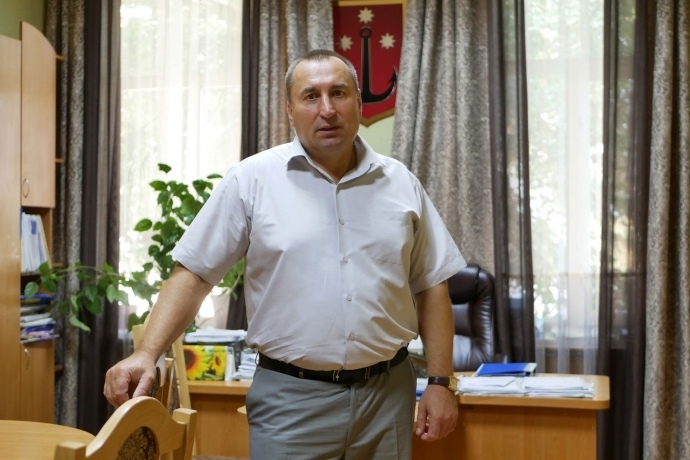
Andrii Bohdan, Head of the Horodnia community, in his office
‘A fortified place’
What is the general feeling among people in your community? After all, they are essentially living on a powder keg, with Russia to the right and Belarus to the left…
There is indeed a sense of living on a powder keg, particularly in border areas that are frequently shelled. However, home is home. Residents of border villages often leave to stay with relatives for rest and sleep, but then they return. The area 15–20 km from the border is particularly problematic. We ask its residents to leave if possible, to avoid endangering themselves or their children. The problem on the border is not only shelling. Most of the bridges there have been destroyed, and no one repairs the roads because it is dangerous. It is also difficult to deliver food... But people do not listen.
What is your vision for the future of your community under these circumstances?
We can forget about large investments coming our way in the next decade, not to mention the development of technology parks and tourist centres. While we used to be on an important route, we now find ourselves at a dead end. Due to the construction of various fortifications and mining activities, we have lost a lot of agricultural land. These are the realities we must face. At the same time, however, we now have a large number of military personnel who have significantly strengthened our community’s economy. They buy food and other items from us, rent accommodation, and make use of various services. These servicemen are clearly our future. After all, we are Horodnia: a fortified place, a fortress. While we previously focused on border cooperation and the development of customs terminals and warehouses, we must now focus on building fortifications and meeting the needs of the military.
But peaceful industries such as logging and agriculture will still operate in your community under any circumstances, won’t they?
They will, but in a greatly modified form. The Russian occupation, for example, has shown us that we need to have reserves of our own products and the capacity to process them. This ensures that we can be autonomous and independent if necessary. Half of our community’s territory is covered with forests, which will always generate income for us. And now, state forestry enterprises are the largest taxpayers, despite the unsuccessful reform which resulted in forestry enterprises in our community alone laying off fifty employees. However, the military needs a lot of wood for constructing various structures and for cladding dugouts, for example. Therefore, in order to support the military effectively, we need our own processing enterprise. Do you see where my thinking is going? This is our future!
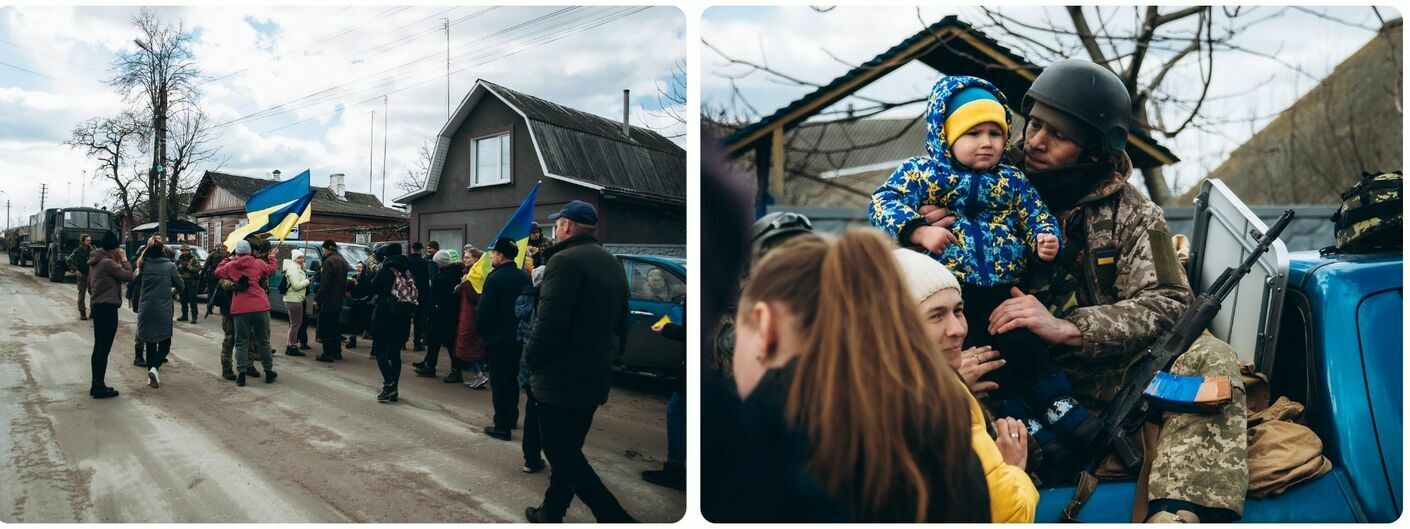
During a meeting with Ukrainian military personnel in the Horodnia community in April 2022. Photo by Oleksandr Skrypka
‘Shoulder-to-Shoulder’ with the whole of Ukraine
Do you support the core idea of the ‘Shoulder-to-Shoulder: Cohesive Communities’ project, which aims to establish a series of ‘fortress communities’ along the border with Russia and on the front line?
Absolutely, I support it! We are actively involved in the project and have signed cooperation agreements with two communities: Pyriatyn in the Poltava region and Slavuta in the Khmelnytskyi region. In fact, we had already started to work with them before, and some of our achievements were incorporated into the 'Shoulder-to-Shoulder' project. To be honest, some communities are not far from living a peaceful life. Therefore, it would be fair if such communities helped ours, which is shelled every week and has no economic activity or investment opportunities. This is the right approach; it is humane. It unites Ukraine, where there will never again be a division into easterners and westerners. I think this project will continue even after the war ends, given that the threat from Russia will not disappear.
In what ways have the Pyriatyn and Slavuta communities helped you?
Pyriatyn transferred UAH 900,000 to us and donated several diesel generators. Slavuta, with whom we recently signed an agreement, organised a recreational trip for around ten of our children through its partners in Poland. And this is just the beginning. Our partner cities are sometimes hit by Russian missile strikes too, and we feel ashamed to ask them for help then. However, they generally understand the peculiarity of our situation… During the President’s visit to Chernihiv this year to mark the anniversary of our region’s liberation, the question was raised at a meeting with city mayors: ‘Should communities on the border with Russia and Belarus be given frontline status?’ The President agreed. And these were not just words. We have recently received approximately UAH 7 million in targeted funding from the Cabinet of Ministers, as well as subsidies to compensate for the loss of agricultural land. These funds have helped us to keep the situation under control.
How do local businesses in your community operate under full-scale invasion conditions?
Our budget for 2025 reached UAH 250 million, UAH 150 million of which came from our own revenues. Due to the labour shortage, entrepreneurs are increasing salaries, meaning that the personal income tax we receive is also growing. We are also gradually registering unregistered land, thereby increasing our income. Thanks to the military, not only have our retail chains maintained their revenue, they have even increased it. So, things are not all that bad…
What can you say about the work of community schools?
Since 2024, our main task has been to provide all schools with bomb shelters, enabling all children to start the new school year in their classrooms on 1 September 2025. In accordance with the requirements of the Ministry of Education and Science, we also closed five (!) schools. Consequently, the four remaining schools – two in Horodnia and two in neighbouring villages – no longer require subsidies from the local budget. We have, of course, organised transport for children to these schools. However, due to the large number of Russian drones, schoolchildren are currently studying mostly online. Nevertheless, we are exploring opportunities to convert basements into learning spaces and aim to establish secure classrooms where children can study offline, providing an alternative to spending all day at home in front of monitors. We are very grateful to the President and the Government for providing free school meals. This will save us a considerable amount of budget funds this year.
How do medical facilities operate in the Horodnia community?
I am proud of our healthcare services. Our hospitals and clinics are well-equipped with modern facilities. We have partially resolved the issue of a shortage of doctors by recruiting a highly skilled surgeon and several other specialists. We have renovated the surgery department so that it not only looks modern, but also complies with all relevant standards in terms of ventilation and oxygen supply, to name a few. We are now planning to reduce the size of the paediatric ward slightly and use the space to expand the neurology ward. After all, the number of children in our hospital is constantly decreasing, while the number of visits to neurologists is increasing. There is nothing that can be done about it; it is war…
How have you managed to attract doctors to your community, given that it borders two enemies?
It was very simple: everyone in the region knows that we buy apartments for doctors and pay them higher salaries than those in Chernihiv. For instance, a secondary care doctor works one and a half shifts and receives approximately UAH 60,000. This is gross, before taxes. Primary care doctors earn around UAH 20,000–25,000. We also have wonderful scenery, clean air, and beautiful water, and we are very close to Chernihiv with excellent transport links. These are also great advantages of our community.
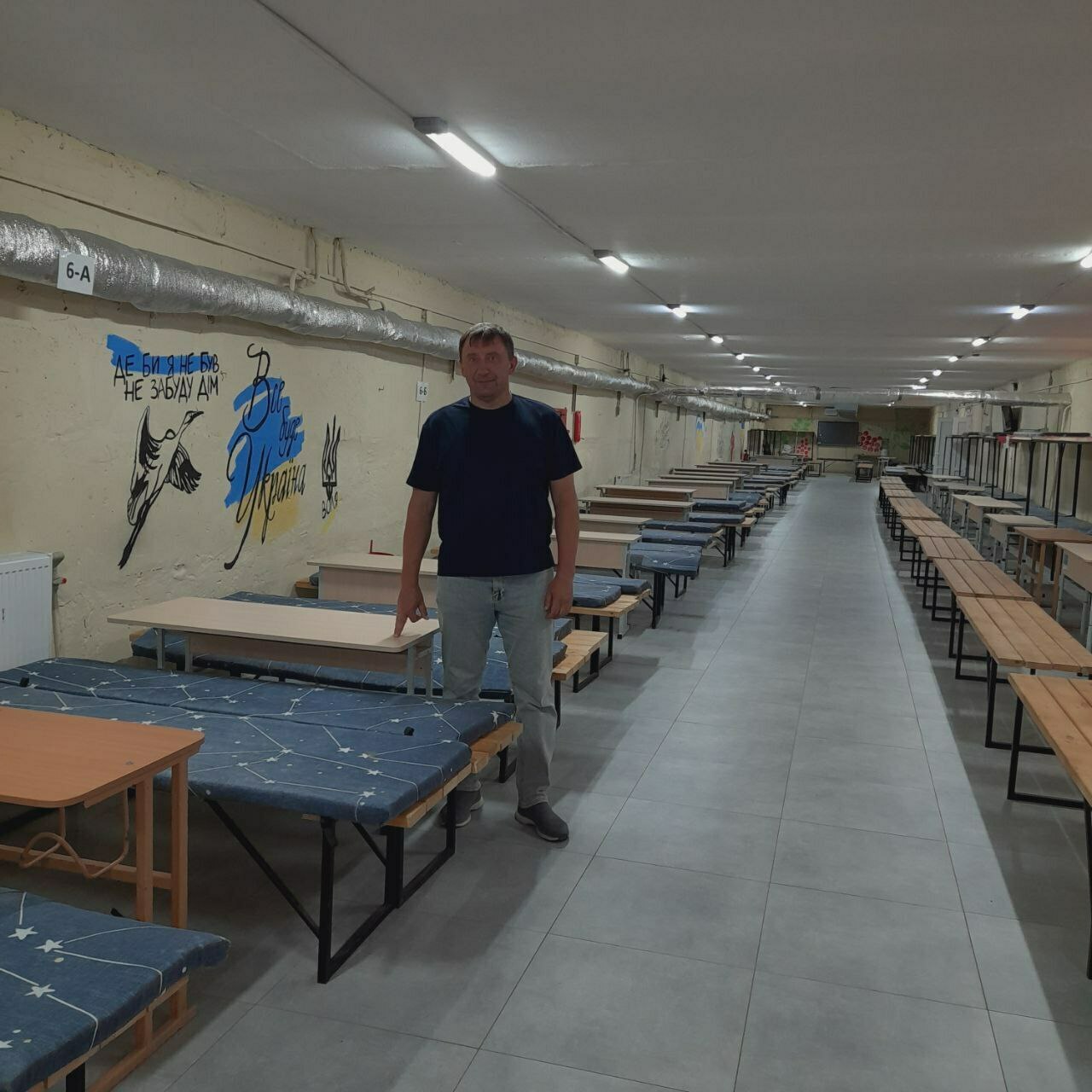
Yurii Hrytsenko, Principal of Lyceum No. 1, showing the bomb shelter. Photo by Svitlana Tomash
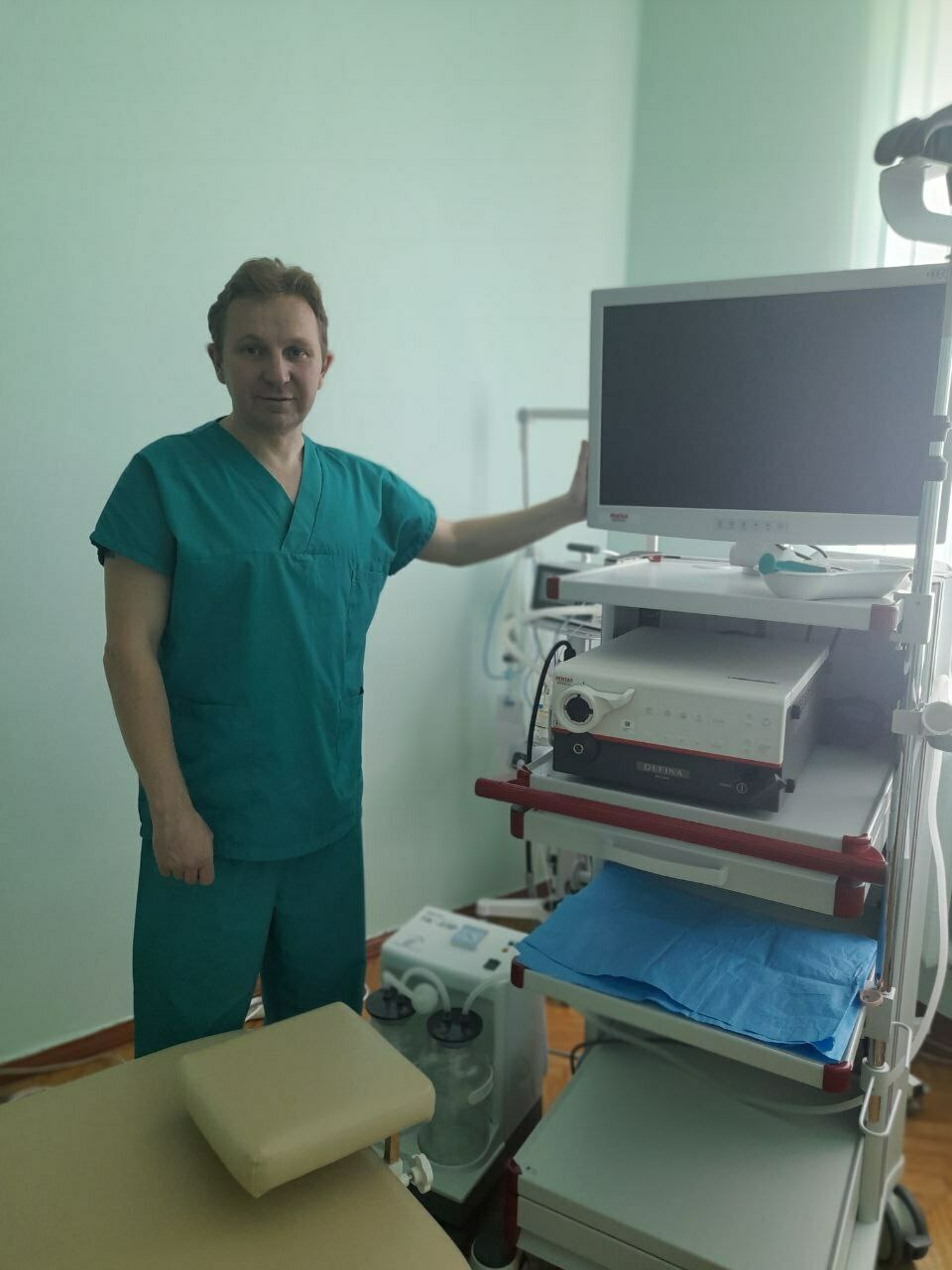
Vadym Pashkan, a new surgeon at the Horodnia Hospital, at his workplace, next to new equipment – an endoscopic wall. Born in the Kherson region, Vadym worked in Beryslav for a long time, but when the city was occupied, he moved to Zviahel. This year, he moved from Zviahel to Horodnia. Photo by Svitlana Tomash
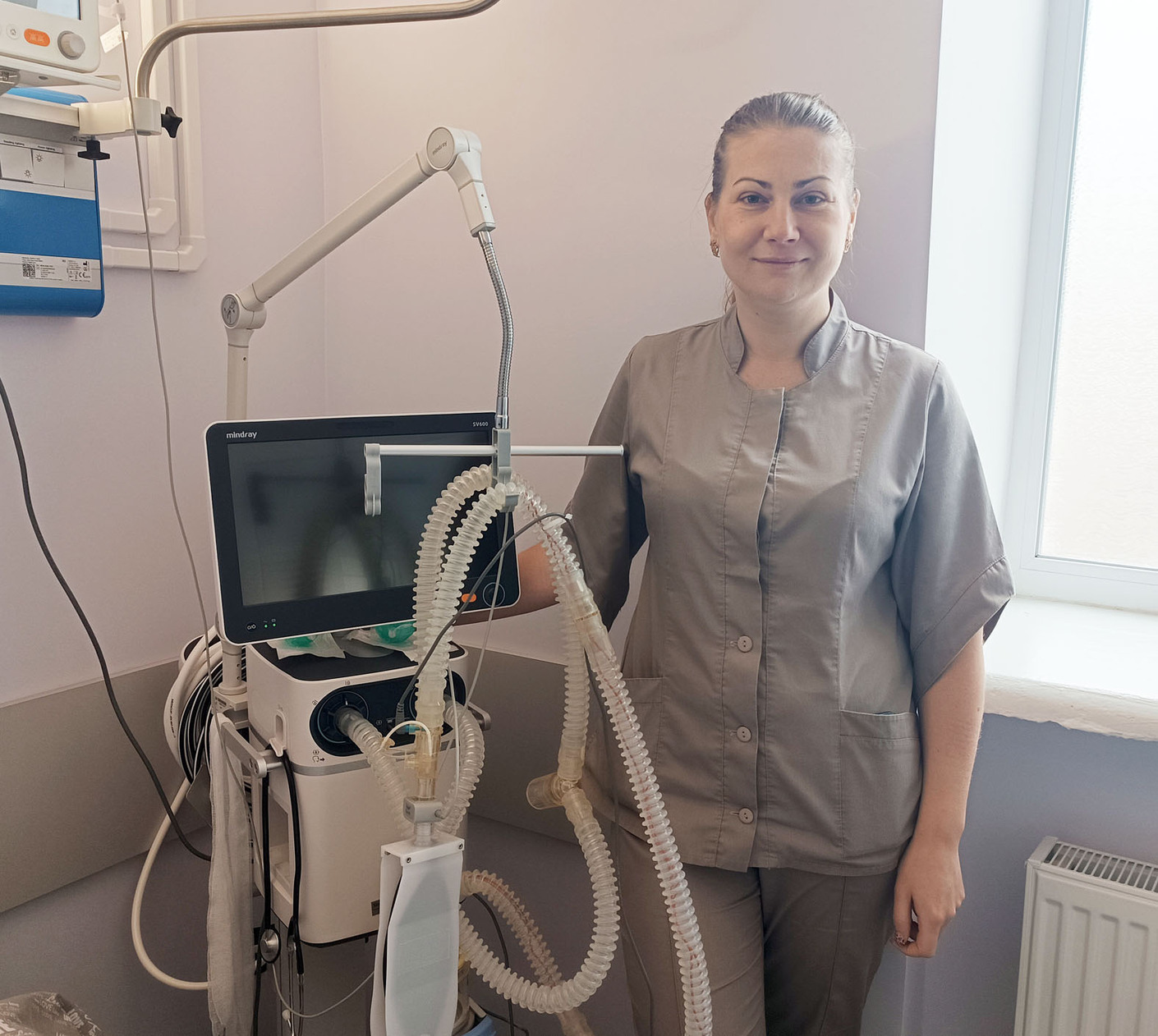
Kateryna Verba, an anaesthesiologist at the Horodnia Hospital, moved to Horodnia from the Donetsk region
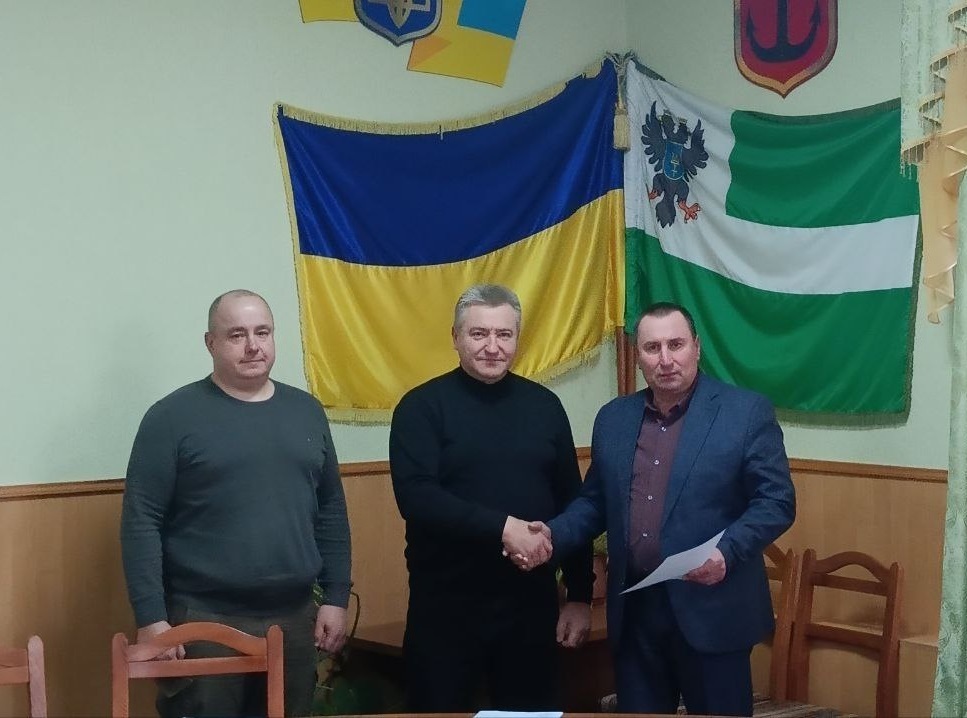
After signing a memorandum of cooperation within the ‘Shoulder-to-Shoulder: Cohesive Communities’ project between Pyriatyn and Horodnia communities. From left to right: Hennadii Brovar and Mykhailo Melnychenko, Deputy Mayors of Pyriatyn, Andrii Bohdan, Mayor of Horodnia
‘Tomorrow, Ukraine’s state border could become the border of the European Union’
Do you manage to obtain funding from international donor organisations?
Yes, we work with around 30 foundations. Last year alone, we raised approximately UAH 140 million – almost equal to our own revenues. The American organisation Global Empowerment Mission (GEM) provided us with a great deal of humanitarian aid. Unfortunately, not all international donor organisations operate in border areas as this is prohibited by their rules. However, some organisations, such as Rokada, work specifically in frontline territories. I always tell people, ‘Tomorrow, Ukraine’s state border could become the border of the European Union.’ If so, people must live here – that should be our state strategy. It is much more difficult for saboteurs to enter populated areas. Therefore, one of the main tasks of our state is to keep people on the border. Back in 2022, Ukrainian TV was unavailable here and most people watched Russian TV. When the Ukrainian army liberated Senkivka, I personally witnessed people watching the main Russian channel on their televisions. There simply were no other channels. There never were… So, I was really surprised that, despite these conditions, the vast majority of our residents were pro-Ukrainian. Russian propaganda had no effect on them. For this reason, I am proud of our people…
What kind of assistance does your community need right now?
The occupation made us realise how vulnerable we are and, at the same time, made us appreciate what we previously took for granted. We discovered that when there is no electricity, there is also no water, communication or heat. Thus, the issue of energy independence came to the fore. This is true not only for us, but for every Ukrainian community… During the power outages following the Russian shelling, it became clear that we needed alternative power sources. Fortunately, thanks to the support of charitable foundations, we have received generators, a Tesla charging station and solar panels, which have been installed in various locations. However, this is unfortunately not enough. Thus, solar panels, generators and charging stations are what we urgently need right now. After all, these will enable us to provide people with the most basic services in any conditions.
Have you managed to resolve the transport issues given that the Russians reportedly took most of your vehicles with them when they left?
This was indeed the case. Therefore, transportation is a strategically important issue for us. How can we organise an evacuation without buses if necessary? How can we transport children to schools when there are fewer and fewer of schools? Let me remind you that we have 60 villages and 15 starosta districts. We need school buses! Another point: if the starostas cannot get around, how will they be able to help people? Without transport, some villages will be cut off from the world. How will residents of these villages get to the community centre? How will they get to hospitals, administrative institutions and shops? Therefore, improving transport links remains an urgent issue, as does providing the community with fuel in case of a blockade.
What kind of assistance from the state do you need most right now?
We need state support in many areas, but most of all in reconstruction and development, for which we lack the necessary resources. Above all, however, we dream of peace. Only after achieving victory will we be able to rebuild the economy, plan for the future and create new opportunities for life and development. Only then will we be able to say that our community is indeed a fortress. This is the fortress referred to in the ‘Shoulder-to-Shoulder’ project. However, we must not forget that it is people, not concrete fortifications, who make a fortress truly strong. Therefore, state policy should focus on retaining people in border regions. This support is crucial for us and, ultimately, all communities on the Russian border.

19 December 2025
Locally-led Recovery Planning: How Polaris Strategic Sessions Work
Locally-led Recovery Planning: How Polaris...
The Polaris Programme continues to provide systematic support to hromadas under its Locally-led Recovery sphere. In...
19 December 2025
Бориславська міська рада затвердила новий Статут громади
Бориславська міська рада затвердила новий...
Сьогодні, 18 грудня, Бориславська міська рада прийняла історичне рішення, затвердивши Статут Бориславської міської...
19 December 2025
Public Finance for Children (PF4C) Ukraine's State Budget 2026 Overview
Public Finance for Children (PF4C) Ukraine's...
UNICEF Ukraine has prepared a brief overview of Ukraine’s State Budget for 2026, with a focus on financing for social...
19 December 2025
Питання релокації пожежно-рятувальних...
“Велика війна” зумовлює не завжди очевидні виклики для територіальних громад. Хоча законодавчі органи активно...
